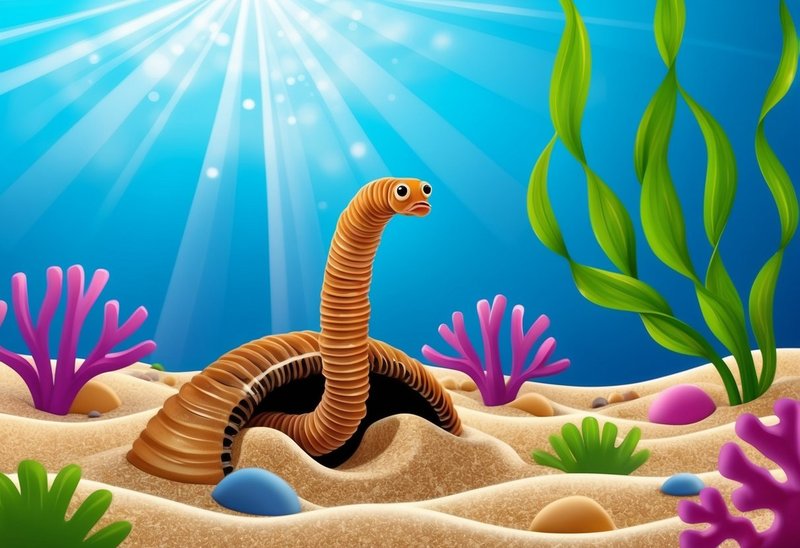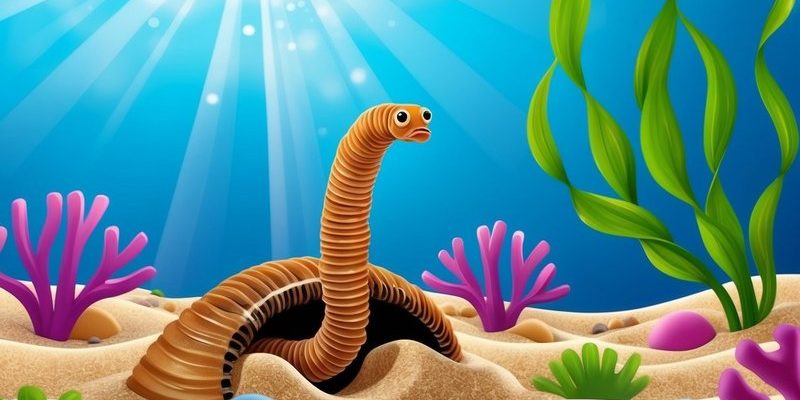
Imagine a giant, colorful spaghetti noodle lurking beneath the seabed, ready to strike at a moment’s notice. That’s pretty much what a Bobbit worm looks like! They inhabit the ocean floor and are often hidden away in their burrows, but they have a pivotal role in their ecosystem. Let’s dive into the world of Bobbit worms and unpack why they’re important players in the delicate balance of marine life.
What Are Bobbit Worms?
Bobbit worms, known scientifically as *Eunice aphroditois*, are some of the most intriguing—and a bit eerie—creatures found in the oceans. These worms can grow up to 10 feet long, although they usually stay around 3-4 feet. They live in burrows that they craft in the ocean floor, which helps them stay hidden from predators while they hunt for their next meal.
What’s really fascinating is their hunting technique. Bobbit worms have a unique set of antennae on their heads that help them detect movement in the water. They can remain perfectly still for a long time, camouflaged amongst the sea floor, and when a fish or any unsuspecting critter swings by, they strike with lightning speed. You might say they’re the ocean’s version of a ninja!
Here’s the kicker: they’re not only terrifying to their prey but also a vital part of the ecosystem. Their predatory nature supports the balance of species within their habitat, making them essential players in the marine food web.
The Food Chain Connection
Every creature in the ocean is part of a larger picture known as the **marine food chain**. This chain is essentially a series of organisms that eat and are eaten. Bobbit worms sit near the top of this chain, preying on smaller fish and crustaceans. Here’s how it works:
1. **Producers**: At the base of the food chain are the producers, like phytoplankton and seaweed. These organisms use sunlight to create energy through photosynthesis.
2. **Primary Consumers**: Next up are the primary consumers—small fish and shellfish that munch on the producers. They rely on the plants for energy.
3. **Secondary Consumers**: Here come the Bobbit worms! They are considered secondary consumers because they feed on these primary consumers, effectively keeping their populations in check.
When Bobbit worms successfully hunt, they’re not just feeding themselves; they provide energy to larger predators, like bigger fish, that might feast on them. This connection illustrates how every species, even the less charming ones, has a role to play in maintaining a balanced ecosystem.
Bobbit Worms as Prey
While Bobbit worms are fierce predators, they’re also prey for other marine creatures. Larger fish, sea turtles, and even some types of sharks find Bobbit worms to be a delicious snack. This means that they have an important role to play at both ends of the food chain.
When bigger fish eat Bobbit worms, they help control their population, ensuring that no single species dominates the area. This balance is crucial because if Bobbit worms were to overpopulate, they could deplete the numbers of smaller fish, ultimately causing a ripple effect throughout the ecosystem.
This predator-prey relationship demonstrates how interconnected marine life is. Each creature, large or small, contributes to a complex web that sustains the overall health of the ocean.
Habitat and Distribution
Bobbit worms are primarily found in tropical and subtropical waters, often hiding in sandy or muddy substrates. Their habitats range from coral reefs to muddy ocean floors, providing them with both cover and access to various food sources.
The adaptability of the Bobbit worm allows it to thrive in different environments. Whether it’s the bustling coral reef or the calm seafloor, these worms have carved out a niche for themselves. The variety of environments they inhabit shows just how diverse marine ecosystems can be.
Many marine biologists study Bobbit worms to learn about their habitats and behavior, as understanding where they live provides insight into the overall health of ocean ecosystems. By monitoring populations, researchers can gather valuable data on the health of marine habitats and the potential impacts of climate change.
Importance in Ecosystem Health
Bobbit worms might not be on everyone’s radar, but they’re vital to maintaining **ecosystem health**. As both predators and prey, they help sustain the balance of marine life. By keeping smaller fish populations in check, they contribute to biodiversity, which is a key indicator of a healthy ecosystem.
Healthy ecosystems support various other species, including those that humans rely on for food and livelihood. For example, a balanced marine food web can lead to more abundant fish stocks that fishermen depend on.
Moreover, Bobbit worms play a role in nutrient recycling. As they feed on smaller organisms and produce waste, they help return essential nutrients back into the ecosystem, supporting the growth of producers like phytoplankton and seaweed.
In this way, Bobbit worms are a piece of the puzzle that leads to a thriving ocean environment.
So, the next time you ponder the wonders of the ocean, don’t forget about the Bobbit worm. Though they may not be the prettiest creatures under the sea, their role in the marine food chain is undeniably critical. They act as predators, prey, and even nutrient recyclers—all of which contribute to the health of marine ecosystems.
Understanding creatures like the Bobbit worm helps us appreciate the complex relationships that exist in nature. Every species, no matter how small or odd, plays a part in the grand symphony of life in the ocean. As stewards of our planet, it’s crucial that we protect these intricate ecosystems and the remarkable creatures that inhabit them. After all, every little worm matters!

